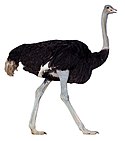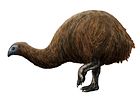
Ratites are a polyphyletic group consisting of all birds within the infraclass Palaeognathae that lack keels and cannot fly. They are mostly large, long-necked, and long-legged, the exception being the kiwi, which is also the only nocturnal extant ratite.

Flightless birds have, through evolution, lost the ability to fly. There are over 60 extant species, including the well-known ratites and penguins. The smallest flightless bird is the Inaccessible Island rail. The largest flightless bird, which is also the largest living bird in general, is the common ostrich.

Palaeognathae is an infraclass of birds, called paleognaths or palaeognaths, within the class Aves of the clade Archosauria. It is one of the two extant infraclasses of birds, the other being Neognathae, both of which form Neornithes. Palaeognathae contains five extant branches of flightless lineages, termed ratites, and one flying lineage, the Neotropic tinamous. There are 47 species of tinamous, five of kiwis (Apteryx), three of cassowaries (Casuarius), one of emus (Dromaius), two of rheas (Rhea) and two of ostriches (Struthio). Recent research has indicated that paleognaths are monophyletic but the traditional taxonomic split between flightless and flighted forms is incorrect; tinamous are within the ratite radiation, meaning flightlessness arose independently multiple times via parallel evolution.
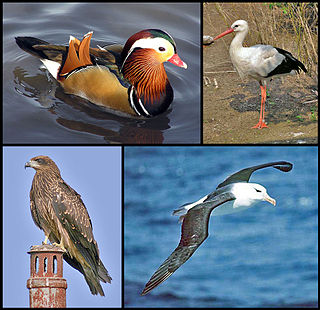
Neognathae is an infraclass of birds, called neognaths, within the class Aves of the clade Archosauria. Neognathae includes the majority of living birds; the exceptions being the tinamous and the flightless ratites, which belong instead to the sister taxon Palaeognathae. There are nearly 10,000 living species of neognaths.

Aequornithes, or core water birds, are defined as "the least inclusive crown clade containing Pelecanus onocrotalus and Gavia immer".

Psittacopasseres is a taxon of birds consisting of the Passeriformes and Psittaciformes (parrots). Per Ericson and colleagues, in analysing genomic DNA, revealed a lineage comprising passerines, psittacines and Falconiformes. The group was proposed following an alignment of nuclear intron sequences by Shannon Hackett et al. in 2008. It was formally named as Psittacopasserae in a 2011 Nature Communications article by Alexander Suh and other authors working with Jürgen Schmitz's group, based on genetic analysis of the insertion of retroposons into the genomes of key avian lineages over the course of evolution during the Mesozoic Era. This clade was defined in the PhyloCode by George Sangster and colleagues in 2022 as the least inclusive crown clade containing Psittacus erithacus and Passer domesticus.
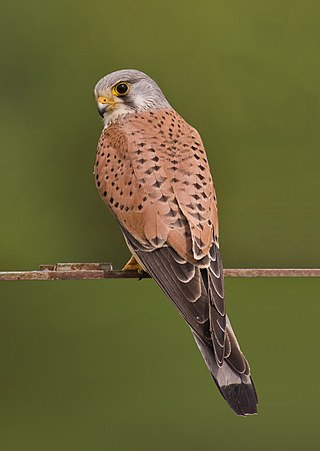
Eufalconimorphae is a proposed clade of birds, consisting of passerines, parrots, falcons, caracaras, and forest falcons. It has whole-genome DNA support. This clade was defined in the PhyloCode by George Sangster and colleagues in 2022 as "the least inclusive crown clade containing Falco subbuteo and Passer domesticus". Eufalconimorphae birds are characterized by their strong and hooked beaks, sharp talons, and powerful wings. They have excellent eyesight, which allows them to spot their prey from great distances. The Eufalconimorphae is noted to produce aerodynamic force during the upstroke of flight to help create a vertical flight pattern.

Afroaves is a clade of birds, consisting of the kingfishers and kin (Coraciiformes), woodpeckers and kin (Piciformes), hornbills and kin (Bucerotiformes), trogons (Trogoniformes), cuckoo roller (Leptosomiformes), mousebirds (Coliiformes), owls (Strigiformes), raptors (Accipitriformes) and New World vultures (Cathartiformes). The most basal clades are predatory, suggesting the last common ancestor of Afroaves was also a predatory bird. This group was defined in the PhyloCode by George Sangster and colleagues in 2022 as "the least inclusive crown clade containing Accipiter nisus, Colius colius, and Picus viridis, but not Passer domesticus".
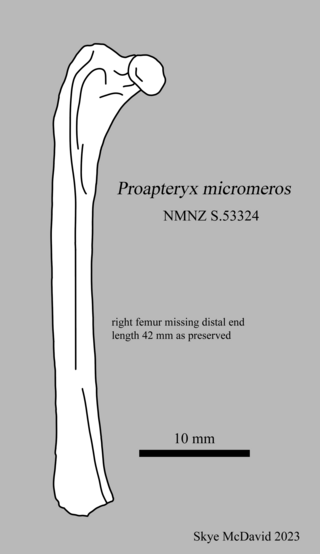
Proapteryx micromeros is an extinct kiwi known from the 16–19 million-year-old early Miocene sediments of the St Bathans Fauna of Otago, New Zealand.

Telluraves is a recently defined clade of birds defined by their arboreality. Based on most recent genetic studies, the clade unites a variety of bird groups, including the australavians as well as the afroavians. This grouping was defined in the PhyloCode by George Sangster and colleagues in 2022 as "the least inclusive crown clade containing Accipiter nisus and Passer domesticus". They appear to be the sister group of the Phaethoquornithes.

Eurypygimorphae or Phaethontimorphae is a clade of birds that contains the orders Phaethontiformes (tropicbirds) and Eurypygiformes recovered by genome analysis. The relationship was first identified in 2013 based on their nuclear genes. This group was defined in the PhyloCode by George Sangster and colleagues in 2022 as "the least inclusive crown clade containing Phaethon aethereus, Eurypyga helias, and Rhynochetos jubatus". Historically these birds were placed at different parts of the tree, with tropicbirds in Pelecaniformes and the kagu and sunbittern in Gruiformes. Some genetic analyses have placed the eurypygimorph taxa in the controversial and obsolete clade Metaves, with uncertain placement within that group. More recent molecular studies support their grouping together in Eurypygimorphae, which is usually recovered as the sister taxon to Aequornithes within Ardeae.

Otidimorphae is a clade of birds that contains the orders Cuculiformes (cuckoos), Musophagiformes (turacos), and Otidiformes (bustards) identified in 2014 by genome analysis. While the bustards seem to be related to the turacos, other genetic studies have found the cuckoos to be closer to the bustards than the turacos are. George Sangster and colleagues in 2022 named the clade uniting turacos and bustards as Musophagotides, defining it in the PhyloCode as "the least inclusive crown clade containing Otis tarda and Musophaga violacea, but not Grus grus or Mesitornis variegatus".
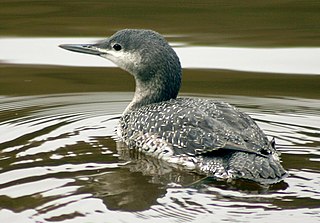
Phaethoquornithes is a clade of birds that contains Eurypygimorphae and Aequornithes, which was first recovered by genome analysis in 2014. Members of Eurypygimorphae were originally classified in the obsolete group Metaves, and Aequornithes were classified as the sister taxon to Musophagiformes or Gruiformes.

Coraciimorphae is a clade of birds that contains the order Coliiformes (mousebirds) and the clade Cavitaves. The name however was coined in the 1990s by Sibley and Ahlquist based on their DNA-DNA hybridization studies conducted in the late 1970s and throughout the 1980s. However their Coraciimorphae only contains Trogoniformes and Coraciiformes. Coraciimorphae was defined in the PhyloCode by George Sangster and colleagues in 2022 as "the least inclusive crown clade containing Colius colius and Picus viridis, but not Accipiter nisus or Passer domesticus".

Eucavitaves is a clade that contains the order Trogoniformes (trogons) and the clade Picocoraciae. The group was defined in the PhyloCode by George Sangster and colleagues in 2022 as "the least inclusive crown clade containing Trogon viridis and Picus viridis". The name refers to the fact that the majority of them nest in cavities.
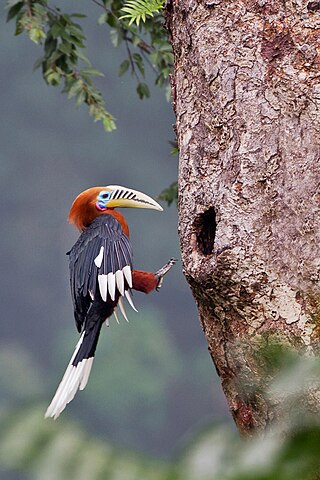
Cavitaves is a clade that contains the order Leptosomiformes and the clade Eucavitaves. This group was defined in the PhyloCode by George Sangster and colleagues in 2022 as "the least inclusive crown clade containing Leptosomus discolor and Picus viridis". The name refers to the fact that the majority of them nest in cavities.

Picocoraciae is a clade that contains the order Bucerotiformes and the clade Picodynastornithes supported by various genetic analysis and morphological studies. While these studies supported a sister grouping of Coraciiformes and Piciformes, a large scale, sparse supermatrix has suggested alternative sister relationship between Bucerotiformes and Piciformes instead. This group was defined in the PhyloCode by George Sangster and colleagues in 2022 as "the least inclusive crown clade containing Buceros rhinoceros, Coracias garrulus, and Picus viridis".

Columbimorphae is a clade discovered by genome analysis that includes birds of the orders Columbiformes, Pterocliformes (sandgrouse), and Mesitornithiformes (mesites). This group was defined in the PhyloCode by George Sangster and colleagues in 2022 as "the least inclusive crown clade containing Columba oenas, Mesitornis variegatus, and Pterocles alchata". Previous analyses had also recovered this grouping, although the exact relationships differed. Some studies indicated a sister relationship between sandgrouse and pigeons while other studies favored a sister grouping of mesites and sandgrouse instead. This sister relationship of the sandgrouses and mesites was named by George Sangster and colleagues in 2022 as the clade Pteroclimesites and defined in the PhyloCode as "the least inclusive crown clade containing Mesitornis variegatus and Pterocles alchata".

Picodynastornithes is a clade that contains the orders Coraciiformes and Piciformes. This grouping also has current and historical support from molecular and morphological studies. This group was defined in the PhyloCode by George Sangster and colleagues in 2022 as "the least inclusive crown clade containing Coracias garrulus, Alcedo atthis, and Picus viridis".

Notopalaeognathae is a clade that contains the order Rheiformes (rheas), the clade Novaeratitae, and the clade Dinocrypturi. Notopalaeognathae was named by Yuri et al. (2013) and defined by Sangster et al. (2022) as "the least inclusive crown clade containing Rhea americana, Tinamus major, and Apteryx australis". The exact relationships of this group, including its recently extinct members, have only recently been uncovered. The two lineages endemic to New Zealand, the kiwis and the extinct moas, are not each other's closest relatives: the moas are most closely related to the Neotropical tinamous, and the kiwis are sister to the extinct elephant birds of Madagascar, with kiwis and elephant birds together sister to the cassowaries and emu of New Guinea and Australia. The South American rheas are either sister to all other notopalaeognaths or sister to Novaeratitae. The sister group to Notopalaeognathae is Struthionidae.





















